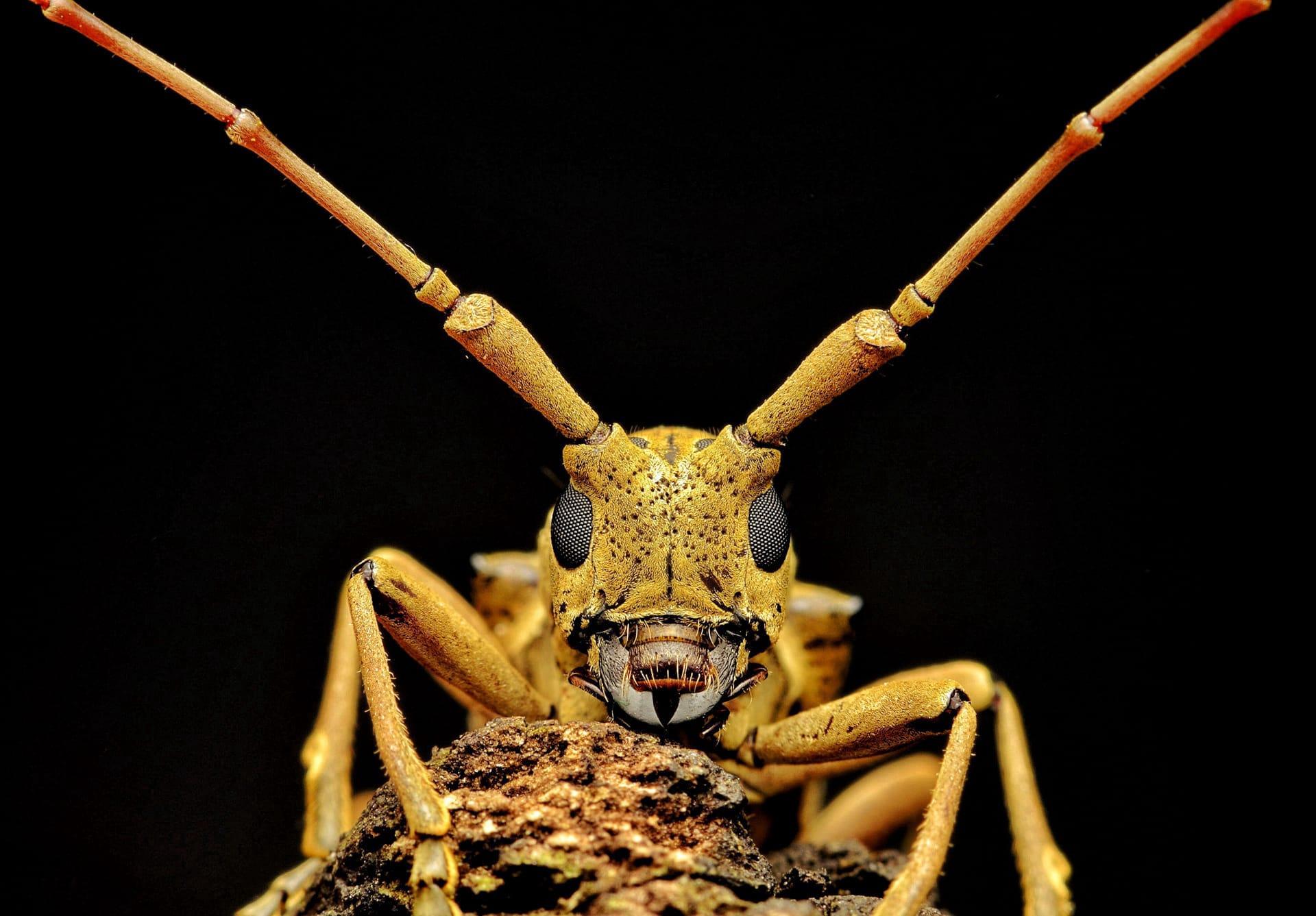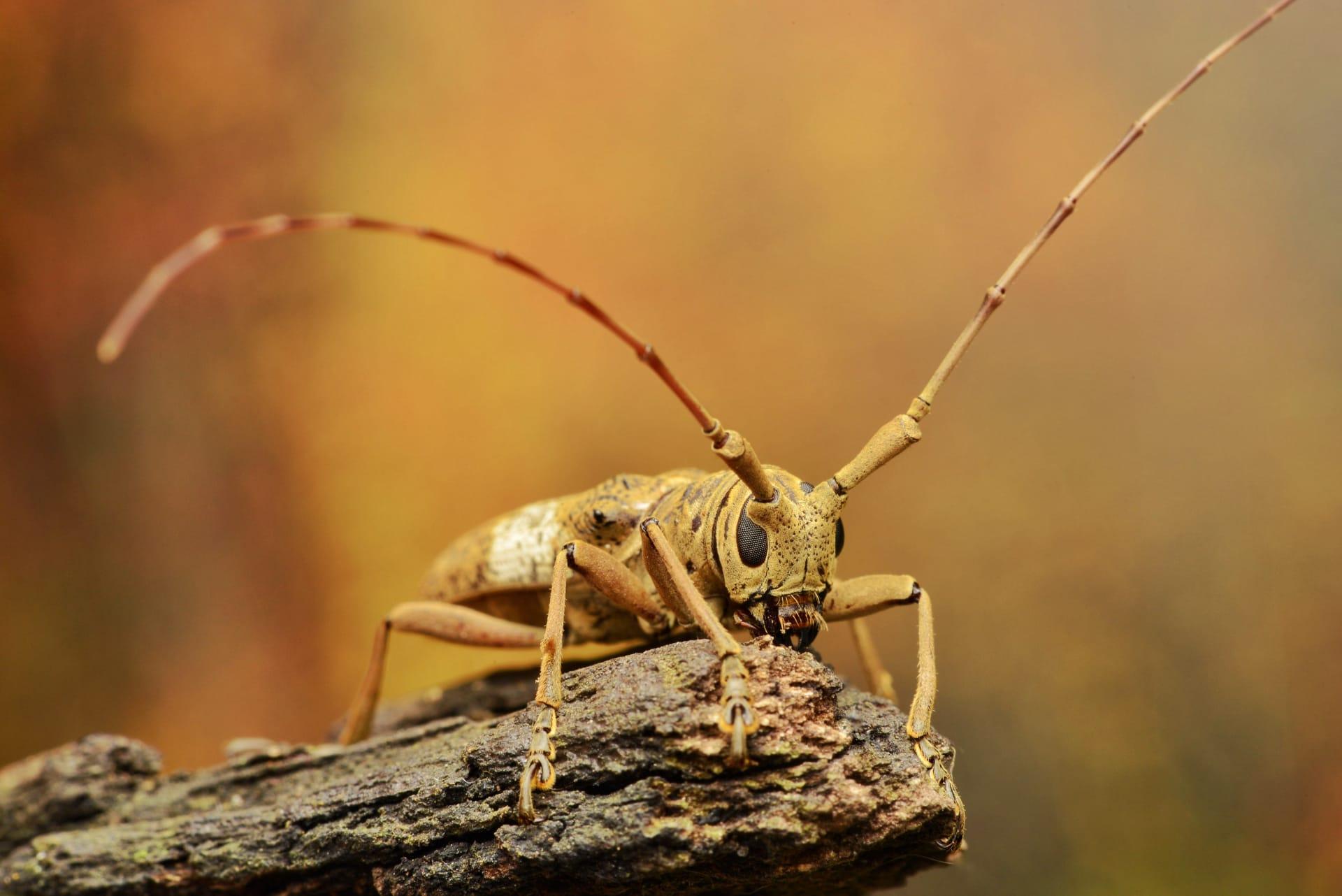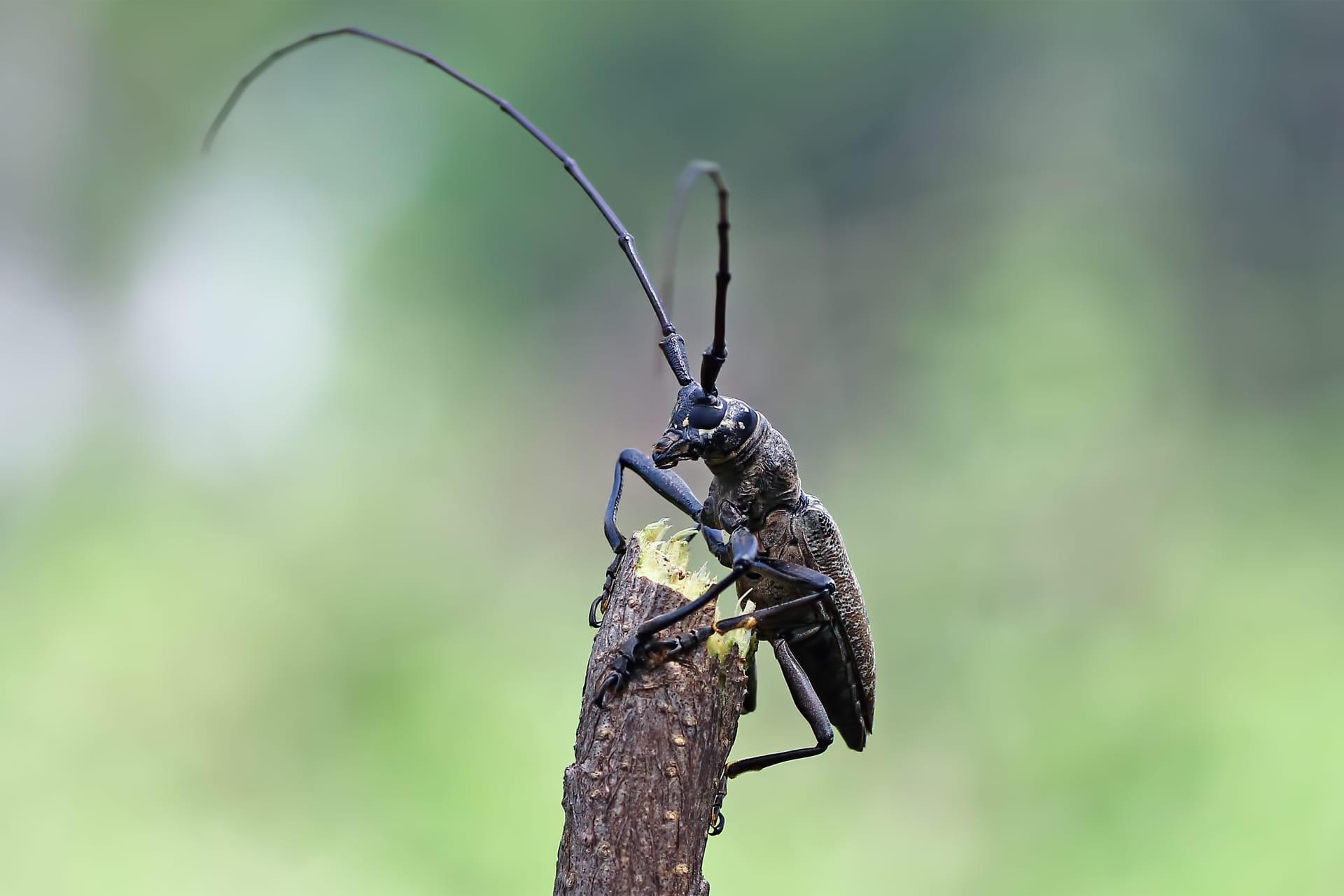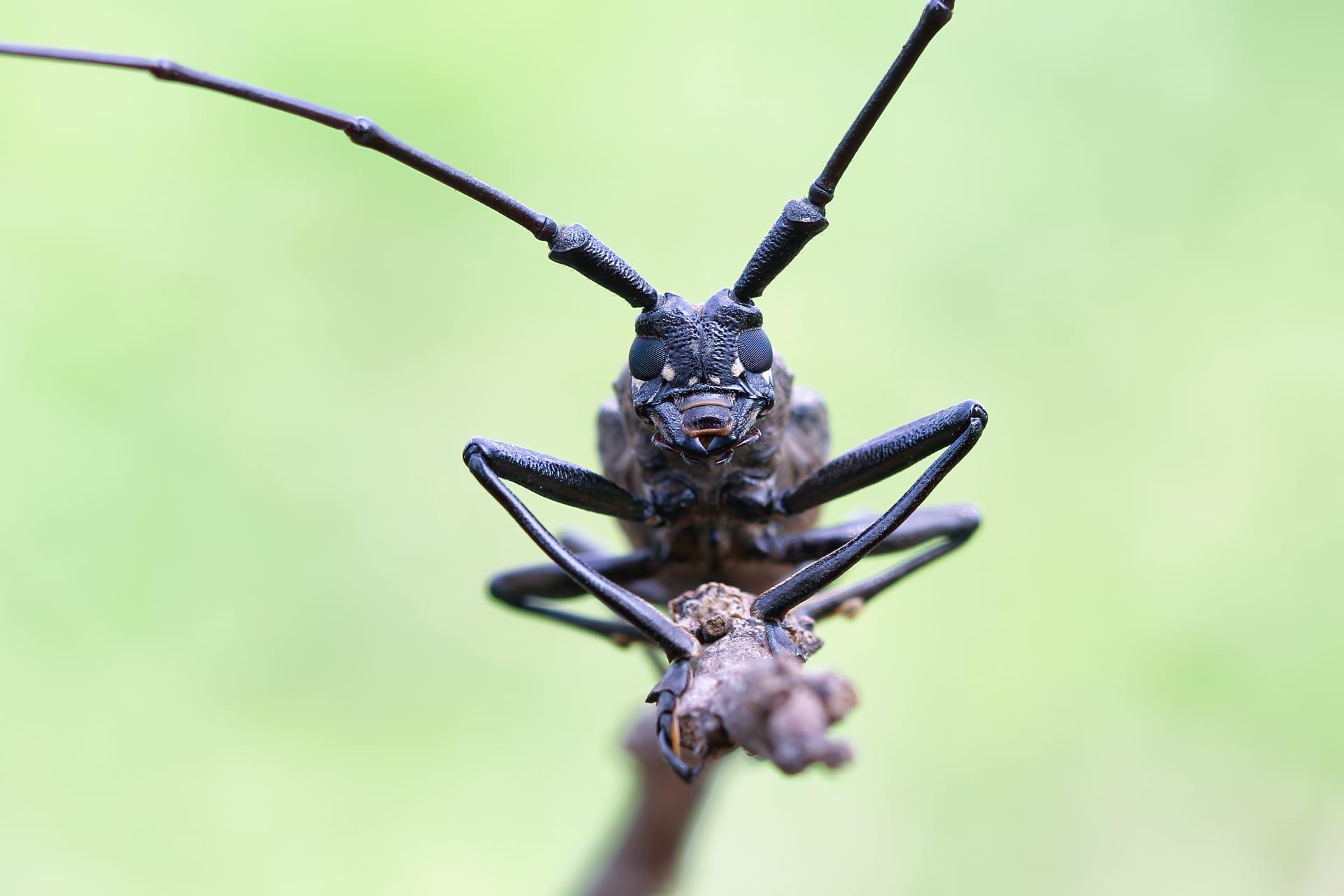1
Did you know that Longhorn Beetles, part of the Cerambycidae family, are named for their exceptionally long antennae? In some species, these antennae can be up to three times the length of the beetle's body. For instance, the male Musk Beetle can boast antennae that are a whopping 70 millimeters long, while its body is only about 20-40 millimeters in length. This striking feature isn't just for show; it plays a critical role in sensing their environment and finding mates.
Another fascinating fact about these beetles is their larval stage, which can last from one to several years depending on the species and environmental conditions. The larvae, known as round-headed borers, are wood-borers. They spend this stage of their life inside the wood of trees or logs, playing a vital role in breaking down and recycling dead wood. The Ponderous Borer, for example, spends a staggering 3-5 years as a larva within hardwood trees, contributing significantly to the ecosystem's nutrient cycle.

2
When it comes to survival tactics, some Longhorn Beetles have developed a unique form of chemical defense. Certain species can excrete irritating chemicals to deter predators. For instance, the Red Milkweed Beetle, a type of Longhorn Beetle, produces a milky substance containing cardiac glycosides. These compounds, acquired from the milkweed plants they consume, are toxic and unpalatable to many predators, providing an effective shield against potential threats.
Another intriguing aspect is their role in mimicry. Many Longhorn Beetles have evolved to resemble wasps and bees, a phenomenon known as Batesian mimicry. This adaptation helps them avoid predation by mimicking the appearance of stinging insects. The Wasp Beetle, for example, has black and yellow bands on its body, closely resembling a wasp. This visual deception helps it to roam freely without attracting much attention from predators who fear a painful sting.

3
Did you know that Longhorn Beetles are also important pollinators? While they're often recognized for their wood-boring habits, these beetles play a significant role in pollination. Their long antennae are not just for sensory perception; they also help in navigating flowers for nectar. In their quest for nectar, they inadvertently transfer pollen from one flower to another, aiding in plant reproduction. This makes them crucial contributors to the health and diversity of ecosystems where they reside.
Furthermore, the diversity of Longhorn Beetle species is remarkable. With over 20,000 species identified worldwide, they showcase a vast array of colors, sizes, and shapes. For instance, the Asian Longhorned Beetle, an invasive species known for its damage to hardwood trees, is recognized by its stark black body with white spots and can be up to 1.5 inches in length. Meanwhile, the beautiful Rosalia alpina sports a striking blue hue with black antennae and can reach up to 38 millimeters in length.

4
Longhorn Beetles have an interesting approach to mating. Many species use pheromones, powerful chemical scents, to attract mates. The males often release these scents to draw in females from considerable distances. For example, the male California Prionus Beetle can emit pheromones that attract females from up to 4 miles away, showcasing their impressive chemical communication skills.
Another intriguing behavior is their ability to mimic the sounds of ants and termites. Some Longhorn Beetle species, when in their larval stage, can produce sounds that resemble those of ants or termites in distress. This clever tactic can sometimes protect the larvae from predators, as it confuses or deters would-be attackers who might be accustomed to avoiding these other insects' distress signals.

5
Some Longhorn Beetles are known for their unusual flying abilities. Despite their often bulky bodies and seemingly unwieldy antennae, many are surprisingly adept fliers. The Giant Longhorn Beetle, for example, has a large, heavy body yet is capable of sustained flight, traveling considerable distances in search of mates or suitable habitats. This not only showcases their adaptability but also their importance in colonizing new areas and maintaining genetic diversity within their species.
The sound production of Longhorn Beetles is not limited to mimicking ants and termites. Adults of some species are known to produce sounds as a means of communication, especially during mating rituals. These sounds are produced by rubbing their body parts together, a process known as stridulation. The precise role and frequency of these sounds can vary widely among different species, adding yet another layer of complexity and fascination to these remarkable insects.